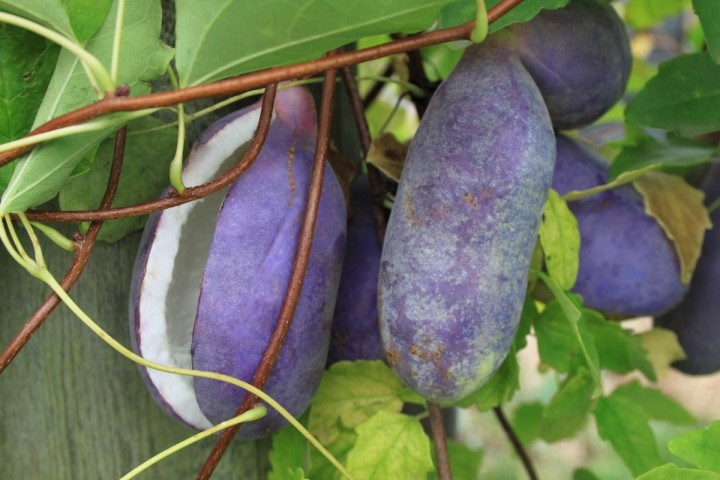Akebia

Key characteristics of the Akebia plant include its compound leaves, consisting of five leaflets arranged in a palmate manner. The flowers are unique and interesting, having a chocolate-vanilla scent and an unusual coloration that includes deep purple or maroon on the outside and lighter shades, often white, on the inside. These flowers can appear in clusters and are pollinated by insects.
Akebia quinata is not just valued for its visual and aromatic appeal; it also produces edible fruits. The fruit of Akebia is typically long, sausage-shaped, and contains numerous small seeds. When ripe, the fruit has a sweet and somewhat tangy flavor, and it can be eaten fresh or used in various culinary applications.
In some regions, Akebia quinata has become an invasive species due to its rapid growth and ability to spread quickly. As such, it is essential to consider its potential invasiveness and ecological impact before planting it in certain areas.
In traditional Chinese medicine, certain parts of the Akebia plant have been used for their potential medicinal properties, though it’s important to note that proper scientific studies are needed to validate these claims.
Overall, Akebia is a fascinating plant with aesthetic, culinary, and potential medicinal value, but it’s essential to manage its growth responsibly to avoid negative ecological consequences.


